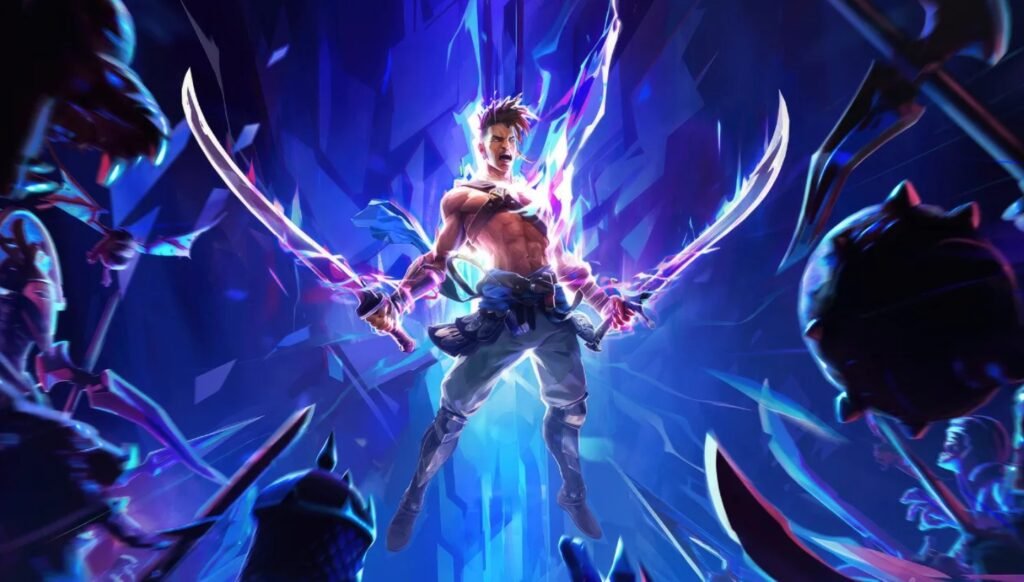Prince of Persia - The Lost Crown
Prince of Persia – The Lost Crown, released in 2010, stands as a testament to the franchise’s enduring legacy. While it may not have garnered the same level of attention as its predecessors, this installment offers a wealth of intricate details and captivating gameplay that deserve recognition. Let’s delve into the depths of this overlooked gem and uncover the rich tapestry it has to offer.
A Story of Redemption and Sacrifice
At its core, The Lost Crown weaves a narrative of redemption and sacrifice. Players once again assume the role of the Prince, who finds himself embroiled in a quest to prevent the resurrection of an ancient evil. Alongside him is Elika, a mysterious companion with her own troubled past. Together, they journey through a fantastical world filled with perilous traps, breathtaking vistas, and enigmatic foes.

What sets The Lost Crown’s story apart is its emotional depth and character development. As the Prince and Elika navigate the trials ahead, they are forced to confront their own inner demons, grappling with themes of loss, betrayal, and the weight of responsibility. The relationship between the two protagonists serves as the emotional anchor of the narrative, evolving organically as they face increasingly dire challenges.
Immersive World Design
One of the most striking aspects of The Lost Crown is its immersive world design. From sprawling desert landscapes to ancient ruins shrouded in mystery, each environment is painstakingly crafted to draw players into its rich tapestry. Whether scaling towering structures or navigating treacherous caverns, every location is teeming with detail, inviting exploration and discovery.
The level design itself is a masterclass in gameplay innovation. Rather than relying solely on combat encounters, The Lost Crown emphasizes puzzle-solving and platforming challenges. Players must utilize the Prince’s acrobatic prowess to overcome obstacles, from leaping across chasms to navigating complex environmental puzzles. This shift in focus adds a layer of depth to the gameplay, encouraging players to approach each challenge with strategy and finesse.
Dynamic Gameplay Mechanics
Central to The Lost Crown’s gameplay experience are its dynamic mechanics, which offer a refreshing departure from traditional Prince of Persia conventions. The introduction of Elika as a companion adds a new dimension to gameplay, allowing players to harness her magical abilities to traverse obstacles and unlock new pathways.

The game’s combat system is also notable for its fluidity and responsiveness. Rather than relying on button mashing, players must carefully time their attacks and counter moves to overcome adversaries. This strategic approach to combat adds an element of challenge and depth to encounters, requiring players to adapt to the strengths and weaknesses of each enemy they face
Criticism and Legacy
Despite its many strengths, The Lost Crown was not without its critics. Some fans lamented the game’s departure from the fast-paced combat of its predecessors, expressing a desire for a return to the series’ roots. Additionally, the game’s relatively short length and linear structure were cited as drawbacks by some players.
However, for those willing to embrace its unique blend of storytelling and gameplay, The Lost Crown remains a cherished entry in the Prince of Persia franchise. Its atmospheric world, engaging narrative, and innovative mechanics continue to captivate players to this day, cementing its legacy as a forgotten gem in the annals of gaming history.
Prince of Persia – The Lost Crown stands as a testament to the franchise’s ability to evolve and innovate while staying true to its roots. With its compelling story, immersive world design, and dynamic gameplay mechanics, it remains a standout entry in the series, deserving of recognition and appreciation from fans old and new alike.

Pingback: "DarkSiders 3: Embrace the Shadowa
Pingback: The tomb raider 2 "unvelling"
Pingback: the rogue prince of persia